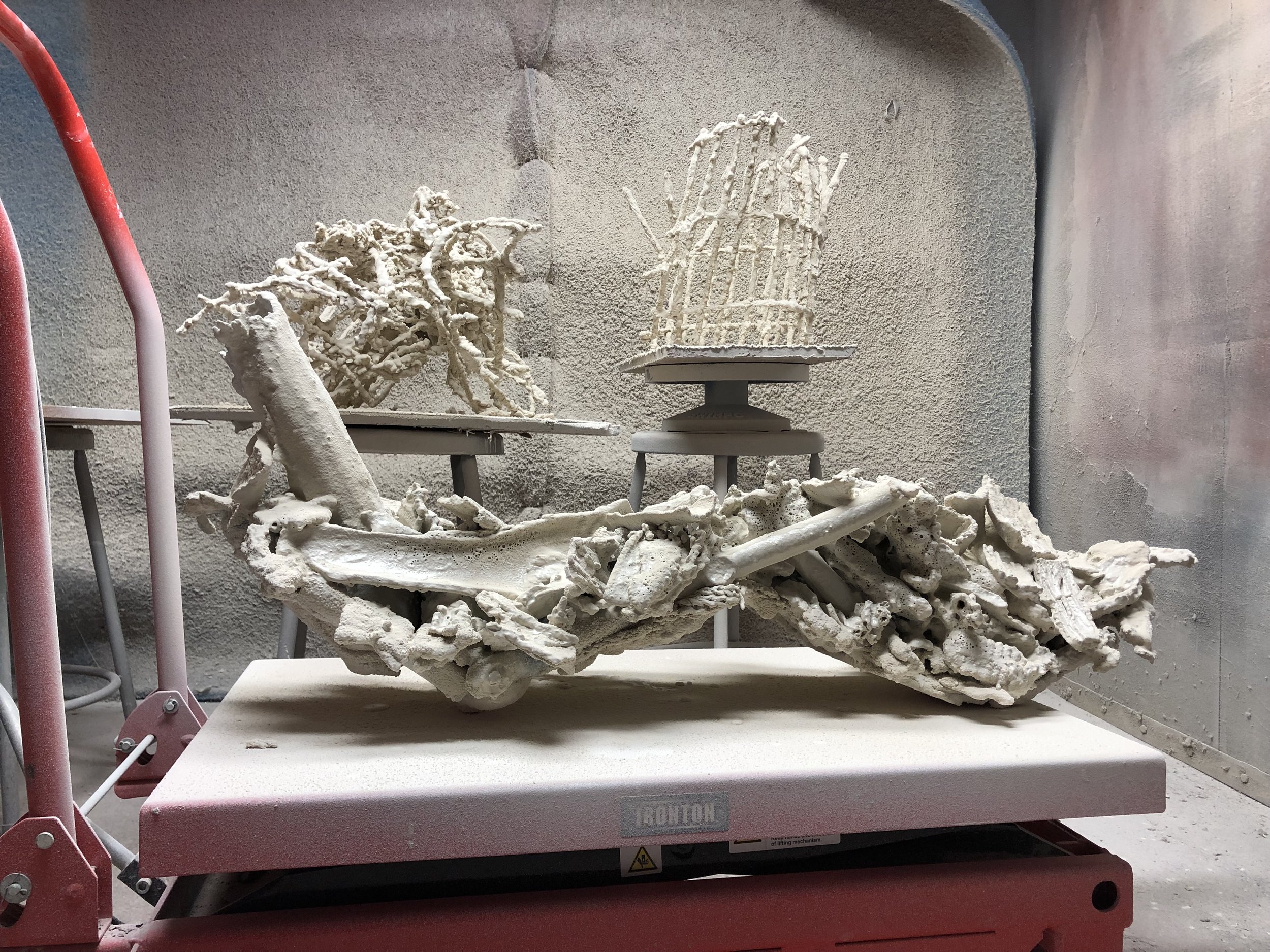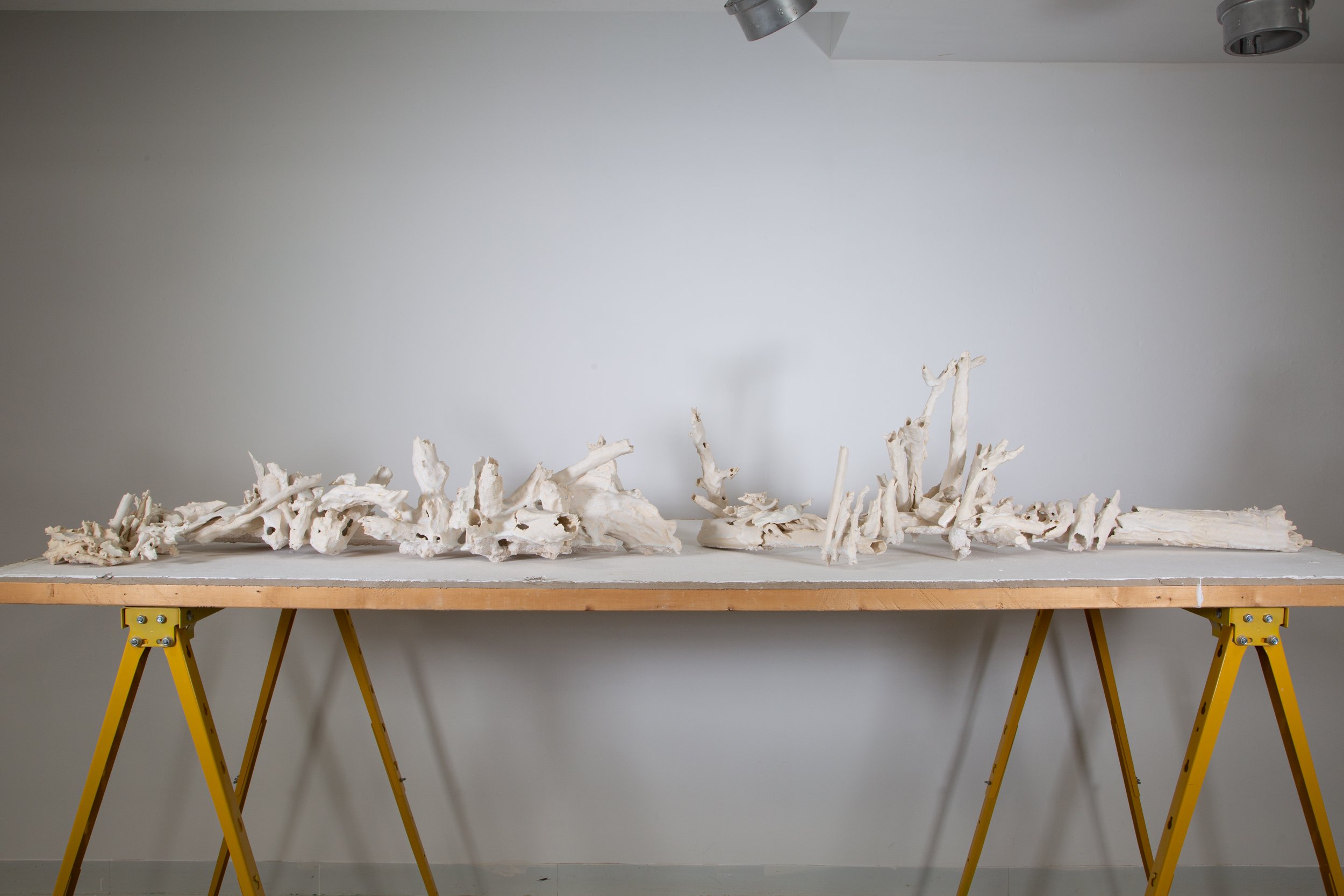She Who Vomited Out Her Own Metals
Statement
"She who vomited out her own metals” is a phrase borrowed from Martin Howse’s opening essay in Becoming Geological. This strange and disquieting yellow book describes the work of the Tiny Mining community: a group of humans that attempt to extract metals from their own bodies, thus becoming both terrestrial appendage and exploitable resource. The Tiny Miners are inspired, in turn, by the kinetic philosophy contained in Thomas Nail’s Theory of the Earth. These texts and projects take a radically posthuman approach to rocks and minerals. Rocks and minerals are perhaps the last materials to which we give ecological consideration or in which we acknowledge historical agency. Yet, these texts argue, rocks and minerals take us far outside ourselves and our anthropocentrism: a reminder that our tenure on this planet is brief, and that all beings and materials—organic and inorganic—are mutating together, in a vast, entangled mesh. Ceramic is mineral. Ceramic is rock. My work is deeply inspired by artists and authors exploring geology from a soft point of view.
My previous body of work, NATURE TO THE DOGS, contained environmental ideas and metaphors that were in tension with one another: ideas of stasis, spirit, and immateriality were contrasted with ideas of mutability, decay, and phenomenology. The title itself is a composite of meaning: it suggests that ‘Nature’ is going to the dogs, while also saying that we should throw the very idea of ‘Nature’ (an idea premised on apartness, on purity) to the dogs. The phrase ‘going to the dogs’ also references collapse, disintegration, inter-speciesism, and biological hierarchies (‘dog’ suggesting subservience or filth).
I am now metabolizing the detritus, the tailings, the waste of this old work into something new. I am recycling. From a poetic standpoint, the meanings of NATURE TO THE DOGS are folded into this emerging body of work, but with additions and dislocations, new strata of meaning. Whereas the sculptures in NATURE TO THE DOGS primarily referenced biological forms (through the use of mineralized trees and fibers), these new bodies take a turn toward geology and the mutative, self-consuming processes of rock formation.
The kiln functions as a proxy for the bowels of the planet. Deep time processes of melting, densification and mineralization are sped up in a single firing. Rocks form: amalgamates of fused, undifferentiated material, their slow transformation a result of millions of years of weathering, heat, compaction. To borrow philosopher Timothy Morton’s words, a rock is a “strange stranger”: emissary from worlds unknowable to us. These ideas become all the more poignant in light of attempts to rename our current geologic epoch—the Anthropocene—the vast terraforming and anthroturbation these new names imply, as well as that contemporary ceramics is very much the product of human systems of mineralogical extraction, distribution, and deposition.
Ecological thought requires us to radically reconsider how we apprehend the world.
Ecological thought is not a pristine, idealized vision of Nature. It does not belong to a discrete place called The Environment. To think ecologically, we must peer through the kaleidoscopic lens of subjectivity, interdependence, and change.
“A sudden foaming from the mouth for instance is the warning of miles of a thick sluggish matter heaped along coastlines, or bubbling up, obstructing the flow of vast industrial evacuation conduits... Foams everywhere like the letter e, down to the alveolar structure.”
Caroline Bergvall, “About Foam”






